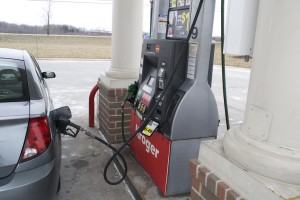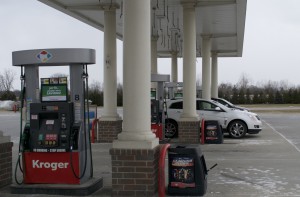Gasoline is getting more expensive and with the summer driving season just ahead prices are already closing in on last year’s high, according to AAA.
“Gas prices are only a penny away from topping the $2.67 high of 2017,” said Jeanette Casselano, AAA spokeswoman. A year ago, the average price of gasoline across the nation was $2.39 per gallon.
“The price is likely to increase as spring brings warmer weather and the switchover to summer blend gasoline, but hopefully we will only see mild jumps in coming weeks,” Casselano said.
Gas prices edged higher this week following the Energy Information Administration’s latest weekly report that showed gasoline inventories dropped by 1.1 million barrels. Demand for gasoline remains robust at 9.2 million barrels per day and is more in line with demand levels at the same time in 2017.
(New study shows best and worst places to drive in the U.S. Click Here for the story.)
At $2.66, the national gas price average is 11 cents more expensive than three weeks ago. “Today, only 38% of U.S. gas stations are selling gasoline for $2.50 or less and that percentage will likely dwindle in coming weeks,” Casselano noted.
The largest year-over-year increases have been in California where prices have climbed 54 cents to $3.52 per gallon, Hawaii, up 47 cents to $3.52, Idaho, up 44 cents to $2.89, Utah, up 42 cents to $2.81, Arizona, up 40 cents to $2.67, Nevada, up 40 cents to $3.07, Oregon, up 35 cents to $3.10, Maine, up 33 cents to $2.66, Rhode Island, up 33 cents to $2.64 and South Carolina up 32 cents to $2.43.
(Fuel economy of new vehicles continues to drop. To find out why, Click Here.)
Baker Hughes Inc. reported that the U.S. gained 11 active oil rigs last week, raising the total number to 808.
Increased U.S. crude output will likely put renewed focus on global crude supplies, as OPEC’s production reduction agreement with non-OPEC producers, including Russia, remains in effect. In fact, last week Russia’s Energy Minister Alexander Novak said that Moscow is considering cooperating with OPEC to curb global oil supplies indefinitely after the agreement expires at the end of the year.
(Transportation eclipses power generation as leading cause of pollutions. Click Here for the story.)
Since the agreement has been in place, OPEC and its partners have worked to reduce their combined output by 1.8 million barrels per day, AAA said in its weekly analysis.


